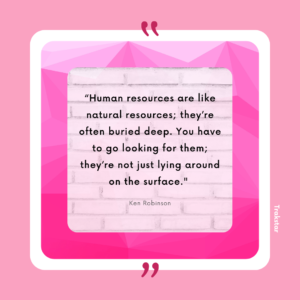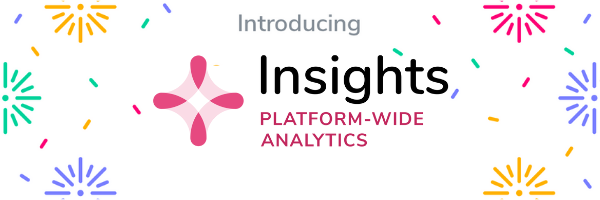Workforce Analytics: How HR Can Incorporate Metrics
Posted by Noel • January 28, 2022 • 5 min read
Workforce analytics take the information HR leaders already gather from your employees, in one way or another, and give you a new perspective on what employees are doing, who they are, and even where you (collectively and individually) can go into the future.
Simply put, workforce analytics are the driving force behind planning, management, and growth.
Having them isn’t enough. You need to know the how and the why behind those analytics. For HR leaders, it is actually a bit easier because the how and why are things you know intrinsically. If something is going wrong with your workforce, there’s a good chance that you already have some inkling of what the problem is. Maybe you aren’t training enough or your training isn’t good enough. Maybe you have a lot of creative thinkers on your team but no one can think analytically. Or maybe it’s the opposite, everyone is thinking logically and no one is thinking outside of the box.
You know your workforce, you know your job. Unfortunately, other people don’t – even those within the organization.
Without workforce analytics and numbers behind those thoughts, they staying your head. You probably have a hard time explaining what you need and even if you do your best, you struggle to get the funding or support you need. Workforce analytics can help you to quantify that work and explain yourself in clearer, succinct ways.
What Are Workforce Analytics?
Workforce analytics are a part of HR analytics. While we can use the terms interchangeably, there is a small but significant difference between the two. Workforce analytics focus more on people data and talent management. They are more closely related to quantitative analytics and data that can then be used in reports and analysis. Workforce analytics focuses on organizing information that is already available in numeric form.
HR analytics, on the other hand, can include already quantified data, but it also includes the “softer” side of human resources. It focuses on procedural efficiency, employee engagement, operations and more.
The need for more workforce analytics and HR analytics is imperative for most organizations. HR leaders often feel like you need to quantify the work you do and “prove” that what you are doing is paying off in the end. Unfortunately, gathering all of this information, calculating the analytics, and then actually going in and analyzing them can add hours to your already packed week. For some HR leaders, it just isn’t a realistic venture.
This is where having great tools that collect this data can help you. Trakstar Insights is a fantastic KPI (key person indicator) dashboard that can help you to collect information and build reports on it. All you have to do is tell the story.
For more information about Trakstar Insights and all of the other tools that will help you make a difference in your organization, you can schedule a free, personalized demo today.
Workforce Planning and Analytics: Where Do You Go Now?
So what happens when you have workforce analytics – what makes them so powerful? Workforce planning and analytics go hand-in-hand when you think about the major tenets of your department.
Analytics are more than just numbers that live on a dashboard. The represent your people, your efforts, and even your struggles. They are living, breathing, and constantly changing. That’s why they are so useful.
You can make real-time decisions about the work you’re doing.
Workforce Analytics to Hiring and Recruitment
Workforce analytics pertaining to hiring can be used in a variety of ways. You can use them to look into the keywords better applicants are using on their resumes, track which job boards are getting better results, identify positive indicators, eliminate bias, and get a short list of candidates quickly when you have an urgent hire.
You can also use workforce analytics to find talent that is similar (or different from) the talent pool you already have. Collect workforce analytics from your existing workforce and then use that data to fill in the gaps when hiring.
Workforce Analytics For Performance Management
Performance management is difficult and it can be even harder to remove your personal relationships with your employees from performance reviews. Everyone has connections and friendships within an organization, but you need to be fair.
Using performance management software is one way to do that, but workforce analytics go deeper and create a more level playing field.
They can help you to monitor performance, track behavior, and look for flag behaviors that you need to address. It can even help you to spot trends that indicate the need for promotions, hiring, or performance improvement plans.
For more information about workforce analytics for performance management, click here to schedule a demo for Trakstar Perform with Insights, a powerful performance management with a built-in analytics dashboard.
Workforce Analytics for Employee Training
Workforce analytics for employee training and management can help to ensure that your learning initiatives meet their goals and help you plan for the future. You can probably identify many skill gaps in your workforce already, but it may have taken months or years to fully identify them.
What if you could intervene earlier?
Workforce analytics can make it clearer where people lack training, when they aren’t completing their training, and where you may need to create new training plans. You’ll be able to map out your high-performing employees and connect them to people who may not be performing at higher levels.
Workforce analytics have the power to touch every single aspect of your employee lifecycle. All you need to do is start gathering that information, charting it, and then put it to good use. At Trakstar, we have developed a complete employee lifecycle management system. Using these together, you will make better decisions when hiring, training, and monitoring performance.
Interested In HR Workforce Analytics? Talk To Trakstar Today
Workforce analytics companies help you organize data once you have it, but Trakstar goes further. Trakstar can help you gather that information through your hiring, training, and employee performance management initiatives.
We just launched Insights in our Perform product, but soon we will have Insights for Learn and Insights for Hire as well. When used individually, you will gain information about those crucial employee lifecycle moments. When they come together, we think they will constitute the most valuable and powerful workforce analytics platform on the market.
If you are ready to start collecting information and generating workforce analytics and insights, you can schedule a demo with us today.
Don't Miss Out on More Great HR Articles!
Subscribe to get the latest, greatest HR and Talent Development content straight to your inbox.



